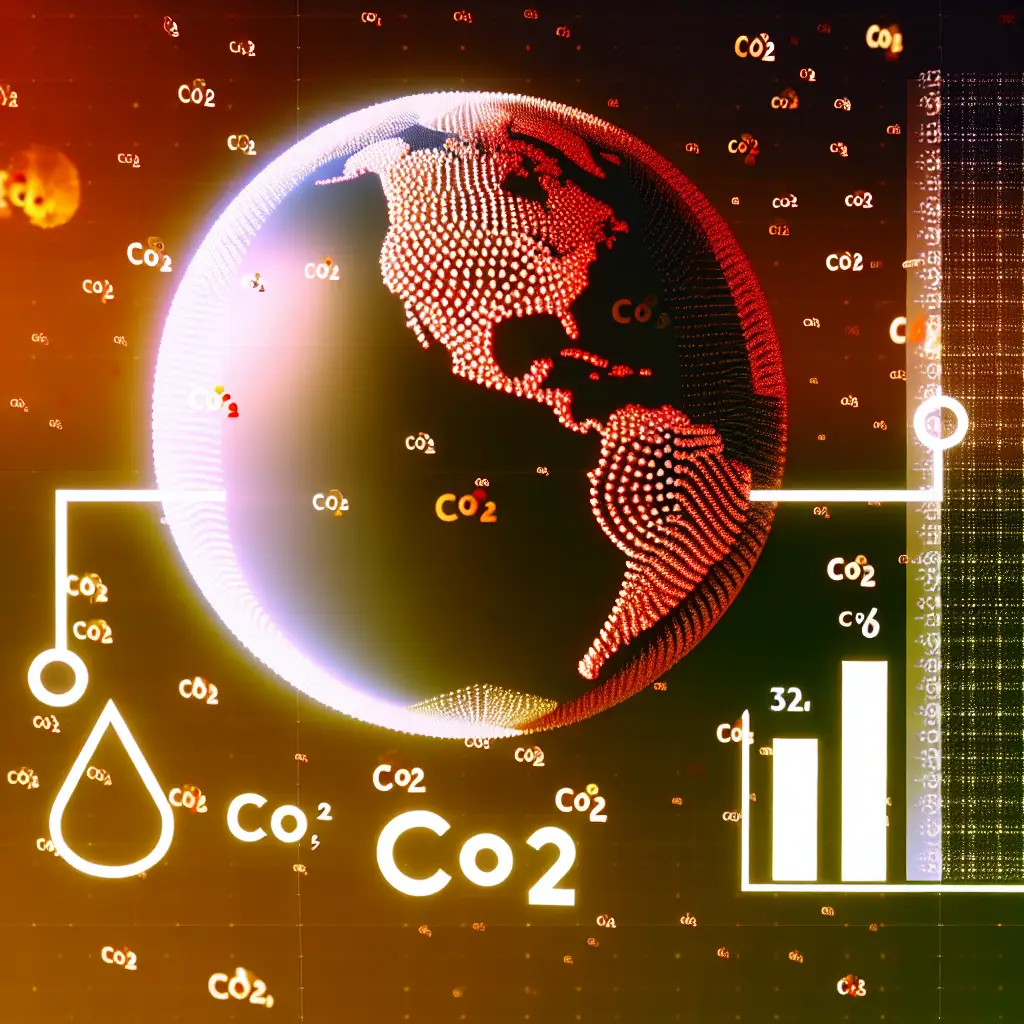CO2’s Impact on Climate Change Despite Low Atmospheric Levels

If CO2 Is Only 0.04% of the Atmosphere, How is it a Concern for Climate Change?
At first glance, it may seem inconceivable that a gas making up just 0.04% of our atmosphere can have a significant impact on planet Earth’s climate. However, the concern surrounding CO2, or carbon dioxide, and climate change is grounded in substantial scientific evidence. In this article, we will delve into the mechanisms by which such a seemingly infinitesimal amount of this gas wields such influence over our planet’s climate.
The Role of Greenhouse Gases
What Are Greenhouse Gases?
Greenhouse gases are atmospheric gases that have the ability to trap heat within the Earth’s atmosphere. The primary greenhouse gases include:
- Water vapor (H2O)
- Carbon dioxide (CO2)
- Methane (CH4)
- Nitrous oxide (N2O)
- Ozone (O3)
These gases allow sunlight to enter the atmosphere freely. When sunlight hits the Earth’s surface and is reflected back as infrared radiation, greenhouse gases absorb and re-radiate this heat, maintaining the Earth’s temperature at a level conducive to life.
Why Is CO2 Special?
Among all greenhouse gases, CO2 gets special attention primarily due to its abundance and longevity in the atmosphere. While its concentration is significantly lower than that of water vapor, CO2 is particularly effective at trapping heat, and its atmospheric levels have been steadily increasing due to human activities such as:
- Burning fossil fuels (coal, oil, natural gas)
- Deforestation
- Industrial processes
Understanding the Concentration vs. Impact Argument
Radiative Forcing
The concept of radiative forcing helps explain why small concentrations of certain gases can have a large impact. Radiative forcing is the measure of the influence a factor has in altering the balance of incoming and outgoing energy in the Earth-atmosphere system. CO2, despite its low concentration, has a high radiative efficiency per molecule, meaning it can trap a significant amount of heat.
The Cumulative Effect
It’s essential to consider the cumulative effect of CO2 over time. Once released into the atmosphere, carbon dioxide can remain there for hundreds of years. This persistent presence means that CO2 accumulates, leading to a compounded effect on global temperatures.
The Evidence of CO2’s Impact
Scientific Studies
Multiple scientific studies have illustrated the direct correlation between rising CO2 levels and global temperatures. Some key points of evidence include:
- Ice core samples that reveal historical CO2 levels and corresponding temperature data over hundreds of thousands of years.
- Direct atmospheric measurements showing a consistent increase in CO2 concentrations since the Industrial Revolution.
- Climate models that predict future temperature scenarios based on various CO2 emission trajectories.
Observable Changes
We don’t need to look far to see the impacts of increased CO2 levels. Observable changes attributed to rising global temperatures include:
- More frequent and severe weather events
- Melting polar ice and glaciers
- Rising sea levels
- Shifts in ecosystems and species habitats
- Ocean acidification
The Importance of Mitigation
Reducing Emissions
Given the established impact of CO2 on global climate, it becomes crucial to implement strategies aimed at reducing carbon emissions. Some effective measures include:
- Transitioning to renewable energy sources (solar, wind, hydro)
- Improving energy efficiency
- Encouraging reforestation and afforestation
- Implementing carbon capture and storage technologies
Policy and Individual Actions
Combatting climate change requires a multifaceted approach involving both policy changes and individual actions. Governments need to enforce regulations that limit carbon emissions, while individuals can contribute by:
- Reducing energy consumption
- Choosing sustainable products
- Supporting policies and politicians who prioritize climate action
- Educating themselves and others about climate issues
Conclusion
While it’s true that CO2 comprises only 0.04% of Earth’s atmosphere, its role in regulating the planet’s climate is profound. The high radiative efficiency of CO2, coupled with its cumulative effect and increasing concentrations, makes it a critical concern in the context of climate change. Understanding these dynamics highlights the urgency of taking comprehensive and immediate action to mitigate CO2 emissions and their impact on global warming.









